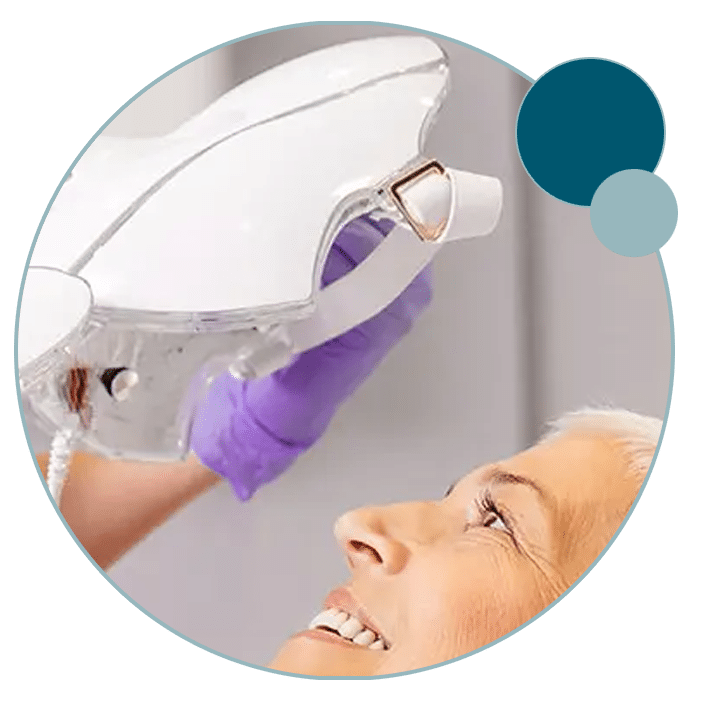Photodynamic therapy combines photosensitizing agents with a certain type of light that activates them.

Photodynamic therapy is a procedure involving the application of a light-sensitizing medication (i.e. Levulan), followed by exposure to a light source that “activates” the medication.
With the procedure, a thin layer of a light-sensitizing medication is applied. Depending on the condition being treated, the medication is allowed to absorb in the skin for typically 60 minutes. Following the absorption period, the entire area is treated with a light device. Protective eyewear is provided. There is some minor discomfort during the treatment. After the procedure, the treated area is gently cleaned, and moisturizer and sunscreen are applied. Although it has been removed from the skin, the medication will remain active for 48 hours.
Click below for full post-treatment instructions.
Immediate redness, discomfort and swelling can be expected and will intensify in the 24-48 hours following treatment. The overall downtime of the treatment varies based on the treated indication. The downtime may last anywhere from 2-10 days and may involve mild redness and flaking to moderate or severe redness, peeling and scabbing. During this time, Tylenol may be helpful, and ice packs intermittently applied to reduce discomfort. Sun exposure after a treatment must be carefully avoided as it may result in a more severe burn with redness.
You can expect a decrease in the number of lesions in the treatment area. The number of treatments required to reach the desired or optimal result varies based on the treated Indication and severity of the condition. Results are seen in the month following each treatment. Your provider will evaluate you to see if the condition has improved or if more treatments are needed.
The number of treatments required to reach the desired or optimal result varies based on the treated indication and severity of the condition. Some conditions may only require one treatment while others may require multiple treatments. Maintenance treatments are then recommended as needed.
Photodynamic therapy is not safe in darker skin types or tan skin. Patients who have taken isotretinoin (Accutane) within the previous 12 months or are currently pregnant cannot have the treatment.